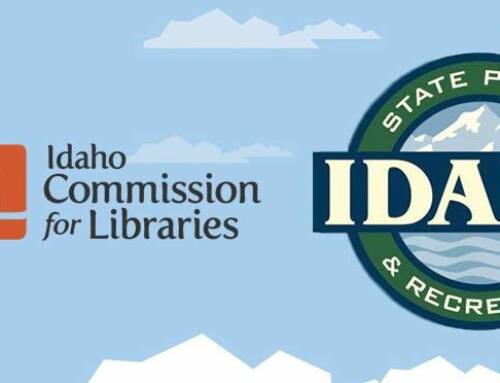Idaho’s library laws are found in Title 33: Education.
Why? Because Idaho’s public libraries form an integral part of the state’s education system.
Idaho Code section 33-2601 states, “It is the purpose of this act to assure an informed electorate by enabling the provision of free local library service, in the present and in the future, to children in their formative years and to adults for their continuing education.”
I.C. § 33-2701 follows suit with, “It is hereby declared to be the policy of the state of Idaho, as a part of the provisions for public education, to promote the establishment and development of public library service for all the people of Idaho. By so declaring, the state acknowledges that the ability of its citizens to access information has a critical impact on the state’s educational success, economic development, provision for an informed electorate, and overall quality of life. It is the purpose of this chapter to integrate, extend and add to existing library services and resources so that public library service may be available to all residents of the state from infancy through adulthood, beginning in the formative years and continuing for lifelong learning.“
Public library programming: How and why?
Public libraries serve many roles in their communities. In addition to early literacy programs and lifelong learning opportunities, they offer vital information that patrons need to improve their quality of life and increase possibilities for personal and professional growth in an increasingly complex society. Typical patron requests include, but are not limited to, information on business, child care, computers, education, environment, health, internet, job skills, job hunting, and maker skills and tools.
Another essential function of public libraries is to supply nourishment for the inner patron. Programs in the arts and humanities that encourage community members to consider and discuss art, ethics, folkways, history, mores, poetry, values, and world cultures play an inherent role in fulfilling the library’s mission. These programs help participants identify the beliefs, experiences, and values that unite us as fellow human beings. They motivate us to make connections between ourselves and previous generations, between our own culture and those of other times and places, between community and individual.
A library’s programs are so essential to its work that statistics on program attendance, collected by the Institute of Museum and Library Services (IMLS), are used to rate public library performance in the annual LJ Index of Public Library Service. Performance of U.S. public libraries is rated in nine categories of annual expenditure, according to four criteria: circulation statistics, number of visits, program attendance, and public internet use. Stars are awarded to public libraries with the highest scores. Changes in mean per capita measures are also published in the nine categories. Results are announced in a November issue of Library Journal, a professional journal founded in 1876 by Melvil Dewey that focuses on the work of public libraries.
Where does the IMLS get those numbers? From the annual reports that both city and district libraries submit to the ICfL.
In Idaho, library boards are governing boards, not advisory boards. One role of a public library’s board of trustees is to determine the goals and objectives of the library and methods of evaluating progress toward meeting them. The board reviews goals and objectives annually in partnership with the library director. The board relates the library and its programs to the community and its needs, discovered through systematic study of the community and through systematic analysis of library service.
The director assists the board with learning about the needs of the community and determining the library’s responses to those needs through library collections, programs, and services.
The library director is evaluated in part on the ability to prepare budgets that can successfully support library services and programs designed to meet goals and objectives set by the board.
Both the board and the director advocate for the library and its programs and services at every opportunity. Both also seek to extend library services to those who have been reluctant to use the library and to those unable to take advantage of customary library programs. Curbside delivery and online storytimes are examples of extended library services during the COVID-19 pandemic.
The library responds to the needs of the community through its collections, programs, and services, collectively known as service responses.
A community needs assessment is designed to reveal the influences acting on the library. This information helps the board to determine the service responses best suited to the library’s strengths and revenues. It also equips the board and director to achieve a deliberate vision for future development, including choices concerning the library’s collections, programs, and services. Having a written strategic plan empowers the board to prioritize programs and focus on tasks that lead to the attainment of the library’s goals and objectives.
In its governance role, the board monitors and strengthens the library’s programs and services, both outputs and outcomes, to ensure continuous oversight and improvement. The Announcements portion of the board’s meeting agenda is an optimal time for trustees and director to share information, such as upcoming programs and new library services.
What is the difference between output and outcome?
An outcome answers the question, “What good did we do?” Outcomes are expressed as changes that individuals perceive.
An output measure is a quantitative standard for determining the amount of work accomplished in a library or library program, usually over a given period of time, used for comparison and evaluation of performance. For example, some of the most common output measures for public libraries include daily/weekly/monthly door count, program attendance, and circulation of library materials, all expressed as numbers.
Both outcomes and outputs are important when drafting the library’s budget for the ensuing fiscal year. These data help library boards and city councils better understand the community’s needs and how the library’s budget will help meet those needs.
For more information, take a look at this presentation by Project Outcome.
Library Friends work in tandem with the library toward a common goal.
Library Friends groups can help publicize the library’s services by organizing Friends membership drives; informing non-users of library services; drawing attention to the library as the educational, recreational, and social focal point of the community; and speaking at public meetings and to individuals about the library’s services, programs, activities, resources, and needs.
A library Friends groups works to help fund library programs that are designed with an eye to achieving the goals and objectives of the library’s strategic plan. A Friends group works to help meet the needs of the library, which works to help meet the needs of the community. It is the responsibility of the library’s board to work closely with the Friends, encouraging them and informing them of the library’s policies and programs. To this end, the board may decide to invite an official observer from the Friends group to trustee meetings. Likewise, the board attempts to keep itself informed of upcoming Friends programs, such as book sales and other library fundraisers.
A library’s program policy states the purpose of programming and how it relates to the library’s mission.
A program policy explains what types of programs the library will offer, who may attend, and who is responsible for organizing and delivering them. Public libraries are sometimes victims of their own success. Some library programs become so popular that attendees living outside the library’s service area leave no seats for the library’s own patrons. This can be a real problem when budget restrictions mean the library is unable to offer multiple sessions of a popular program. It is awkward for everyone when a library must turn away a taxpayer or non-resident card holder, as these are the people who have paid the taxes or purchased the non-resident cards that fund the library. A program policy can define who may attend programs, who gets first dibs on registration, and may even require preregistration using the patron’s library card number. One example is the Program Policy of the Akron [Ohio] Public Library.
For more information, please contact your ICfL Area Field Consultant. We are always glad to help.



